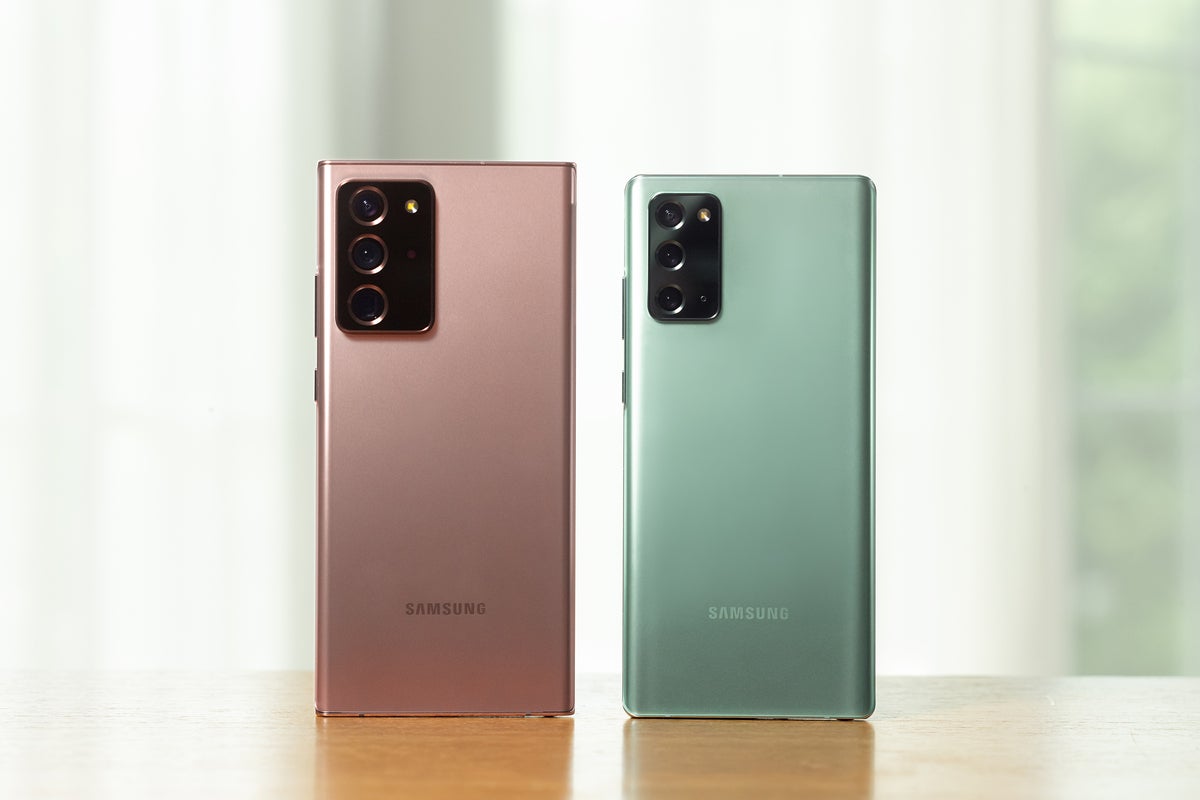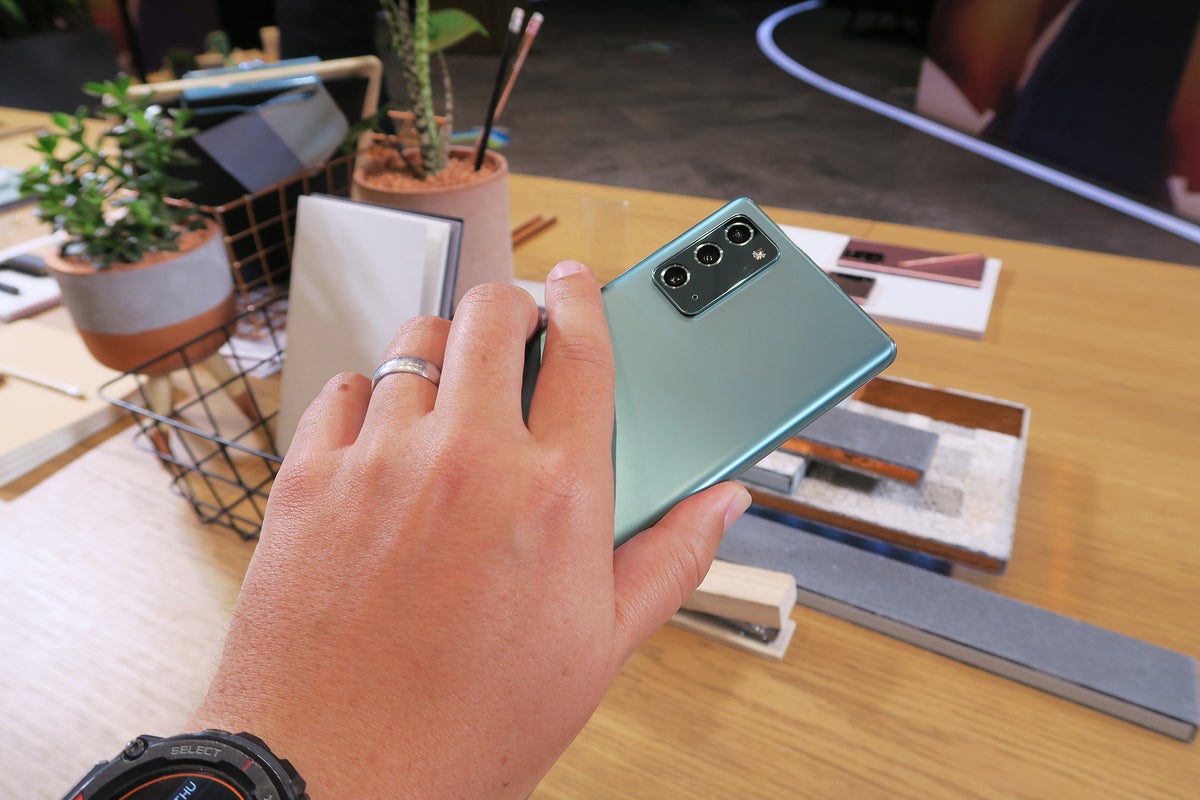If you don’t want to spend $1,300 or $1,450 on the Galaxy Note 20 Ultra, Samsung has an affordable option for you: the Galaxy Note 20. Like last year’s Note 10, the Note 20 is a less-loaded handset, meant to bring the Note experience to a less-demanding crowd that still wants all the productivity benefits provided by the S pen.
It could have been one of the best phones of the year. Samsung has made all the right moves with the Note 20, prioritizing a big screen, top-of-the-line processor, 5G modem, and excellent camera. Looking at the spec sheet, I’d expect the Note 20 to cost about $799, maybe even $750 like the S10e. Either price would make the Note 20 one of the best premium Android values this side of the OnePlus 7T.
 Samsung
Samsung
The Galaxy Note 20 (right) might look like a smaller version of the Note 20 Ultra, but it’s made of plastic.
The only problem is it costs $200 more than that—a full $1,000—and it’s incredibly hard to justify the price. Unlike the Galaxy S20, which brings the same premium performance and speedy display as the higher-priced S20 Ultra, the Note 20 cuts more corners than a kindergartener with a fresh pair of safety scissors.
Take the display. While it might seem like a slightly smaller version of the Note 20 Ultra, the screen specs are far inferior to those of the flagship Note:
Galaxy Note 20: 6.7-inch Full HD+ Super AMOLED Infinity-O (flat), 2400×1080, 393 ppi, 60Hz refresh rate Galaxy Note 20 Ultra: 6.9-inch Quad HD+ Dynamic AMOLED 2X Infinity-O (curved), 3088×1440, 496 ppi, 120Hz refresh rate
Now compare it to the Galaxy S20, which costs the same as the Note 20:
Galaxy S20: 6.2-inch Quad HD+ Dynamic AMOLED 2X Infinity-O (curved), 3200×1440, 563 ppi, 120Hz refresh rate
So while the Note 20 offers an extra half-inch of diagonal screen size, you’re losing a lot in resolution and refresh rate. You’re also giving up the curved edge, though depending on your preference, that might be a benefit. So why would anyone choose this phone over an S20 for the same price?
 Alex Todd/IDG
Alex Todd/IDG
The Note 20 looks like a glass phone, but it’s made of plastic.
The deficiencies continue. You’ll also get 4GB less RAM (8GB vs. 12GB), no expandable memory slot, a heavier weight (194 grams vs. 163 grams), the same camera, and only a slightly bigger battery (4,300mAh vs. 4,000mAh) for the same $1,000 as Samsung charges for the S20. All that, and the back is made of “reinforced polycarbonate,” instead of the glass that every other flagship phone has.
Lite but luxury
It didn’t have to be this way. Earlier this year, Samsung introduced the Note 10 Lite, with many of the same specs as the Note 20, for around $500. It has the same 6.7-inch display, 8GB of RAM, and 128GB of storage, along with a larger battery (4,500mAh) and a higher-resolution front camera. And of course, because it’s a Note, it comes with the S Pen on board.
 Samsung
Samsung
The Note 10 Lite has a lot in common with the Note 20—except it costs hundreds less.
Samsung fans will point out that the Note 10 Lite doesn’t have the Note 20’s 5G or Snapdragon 865+. But those two components should make the Note 20 about $250 more expensive, not $500. At $1,000, the Note 20’s just not worth it, especially following the launch of the laudable (if late) Google Pixel 4a earlier this week.
It’s a shame because there’s nothing wrong with the Note 20. The move to a plastic back, a flat screen, even lower resolution, are all acceptable trade-offs to bring down the price—if Samsung had actually brought down the price.
Instead, it’s hard to see who would buy the Note 20. Hardcore Note fans will surely gravitate toward the Note 20 Ultra, Samsung fans will likely opt for the S10+, and budget-minded users will look to the A51 or A71, all of which come with 5G modems. That leaves the thousand-dollar Note 20 without an audience other than the uninformed buyer who wanders into a carrier store with a pocketful of cash.
